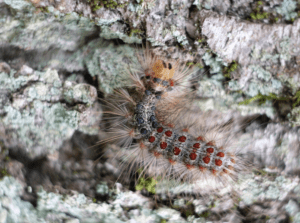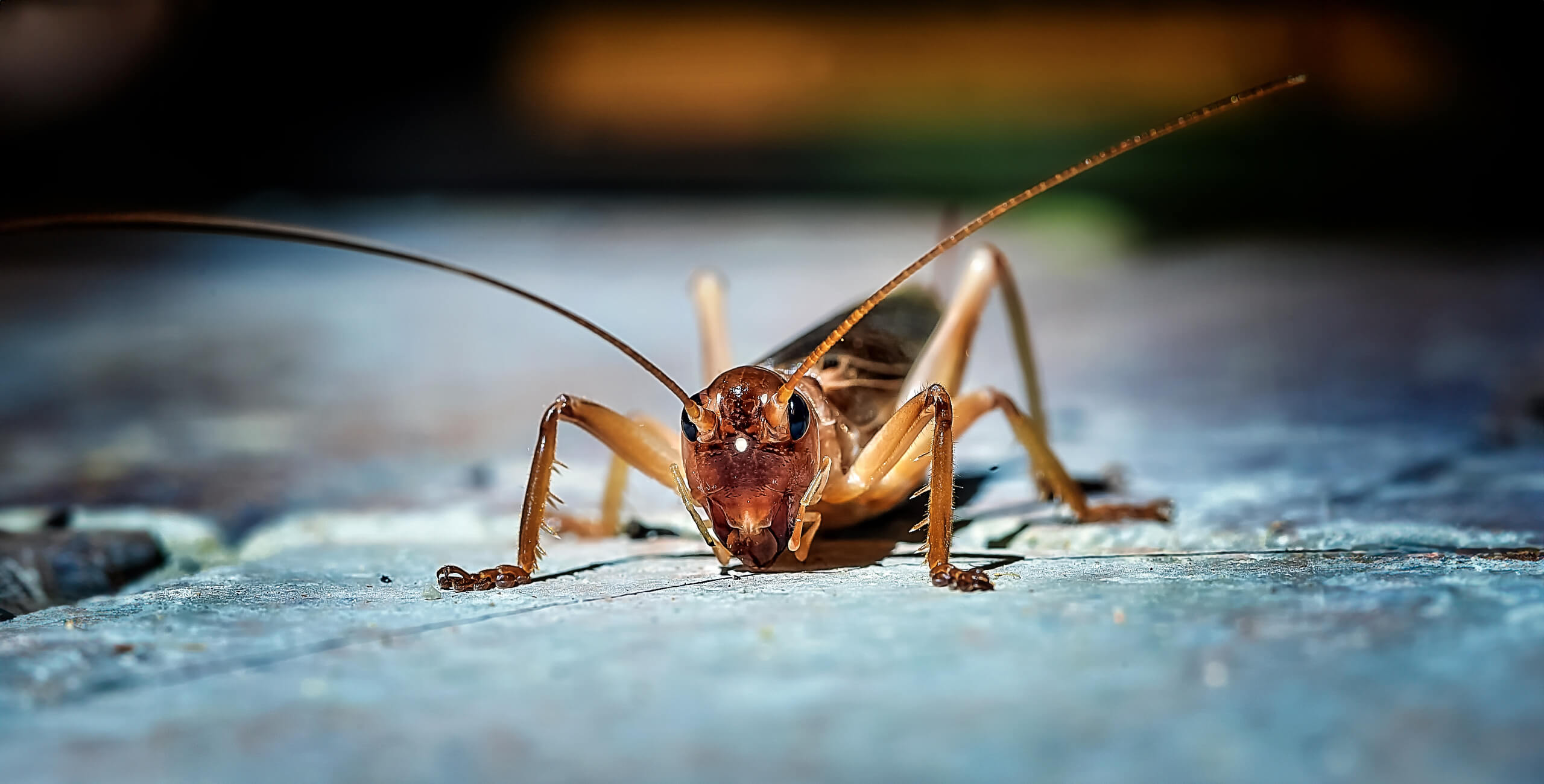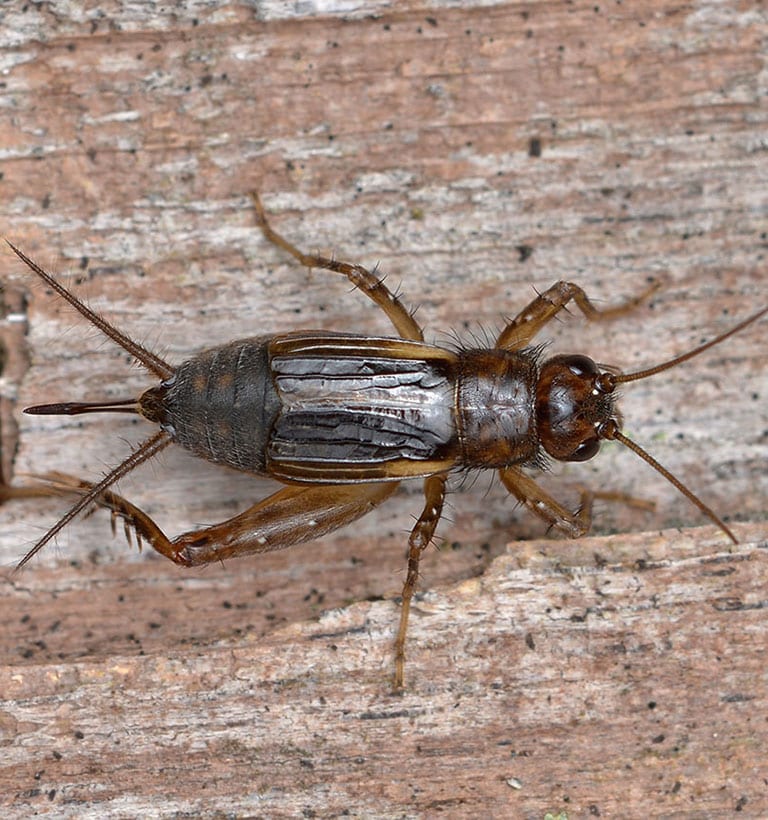

Types of Crickets in New Jersey: Identification and Control
Crickets are common pests in New Jersey, often causing nuisance with their chirping and potential damage to plants. Understanding the different types of crickets can help with effective cricket control and prevention strategies.
What Does a Cricket Look Like?
Crickets are small to medium-sized insects, typically ranging from ½ to 2 inches in length. They have a distinctive body shape, with a robust, cylindrical body and long, slender antennae that can often exceed their body length. Most crickets are brown, black, or greenish in color, though some species may have lighter markings or stripes. Their coloration helps them blend into their surroundings, such as soil, leaf litter, or vegetation.
A key feature of crickets is their strong hind legs, adapted for jumping, though they are generally less powerful than those of grasshoppers. Their wings, which often lie flat along their backs, can be used for chirping (stridulation) in males, producing their signature sounds. Crickets also have shorter, stouter bodies compared to grasshoppers, whose bodies are more elongated. To distinguish crickets from grasshoppers, observe their antennae and activity patterns. Crickets have long, thin antennae, while grasshoppers have shorter, thicker ones. Additionally, crickets are more active at night and prefer hiding in crevices, whereas grasshoppers are diurnal and often seen leaping through grassy areas during the day. This combination of traits makes crickets easy to identify.
Types of Crickets in New Jersey
The following species are the most commonly encountered crickets in New Jersey:
Field Cricket
Field crickets are typically found in grassy fields, gardens, and meadows. They are medium-sized, usually brown or black, and have long antennae. These crickets are known for their loud, rhythmic chirping during the late summer and fall. They thrive in moist environments, often hiding under rocks, logs, or other debris.
House Cricket
House crickets are commonly found indoors, particularly in basements, garages, and other sheltered areas. They are light brown or tan, with three dark stripes running lengthwise on their heads. They produce a loud, distinctive chirping sound. House crickets are attracted to warm, dry spaces.
Camel Cricket
Camel crickets, also known as cave crickets or spider crickets, are easily recognized by their large, humpbacked appearance and long, spindly legs. They are usually light brown or gray and are often found in dark, damp environments like basements, caves, and under logs. Unlike other crickets, camel crickets do not chirp and are more likely to jump away when disturbed.
Tough Cricket
Tough crickets are dark brown to black and are typically found in wooded areas or near forest edges. They are more robust than other crickets, with a stronger body structure. Their chirping is more subdued compared to other species, and they prefer damp, shaded environments for shelter.
Spring Cricket
Spring crickets are smaller and more slender than other crickets, with a brown body and lighter markings. As the name suggests, they are most active in early spring. They are found in grassy areas or along the edges of fields and meadows, producing a high-pitched, fast-paced song during their mating season.
Are Crickets Dangerous?
A commonly searched question regarding crickets is “are crickets pests?” Crickets generally pose minimal physical danger to humans, pets, or property, but they can become a nuisance pest in certain situations. One of the main issues with crickets is their loud chirping, especially during mating season. This noise can become disruptive, particularly when crickets enter homes, as they are nocturnal and chirp at night. Crickets can also be a nuisance in gardens and lawns, where they may feed on plants. While they are not typically a major threat to crops, their feeding habits can cause minor damage to young seedlings or tender vegetation. In extreme cases, large populations of crickets can defoliate certain plants, especially in areas where crickets are abundant.
Crickets are not toxic to pets, and they can even be a food source for some animals such as reptiles, amphibians, and birds. However, pets like dogs and cats may develop a habit of chasing or eating crickets indoors, which can lead to them consuming items that are not part of their regular diet. While this is not usually dangerous, some dogs can get sick from it. Additionally, wild crickets can carry parasite eggs such as roundworm and stomach worm.
Overall, crickets are more of a nuisance due to their noise and tendency to invade homes and gardens, and less of a direct risk to health or property.

Cricket Control Tips
If you find yourself asking “how do I get rid of crickets,” consider the following tips. First, reduce the attraction of crickets by eliminating their food sources. Outdoors, keep your garden tidy by clearing away debris, leaf litter, and grass clippings, as these areas provide hiding spots as well as food. Insects like crickets are also drawn to moist environments, so ensure proper drainage around the home to prevent standing water that might attract them. Consider using natural repellents like diatomaceous earth around the perimeter of your home. If crickets are particularly abundant, professional cricket pest control services may be necessary to manage large populations. Regularly inspecting and maintaining your home’s foundation can also prevent further infestations. Indoors, seal cracks and gaps in windows, doors, and walls to prevent crickets from entering. Installing door sweeps and weatherstripping can also help keep them outside.
For more direct control, you can use traps to catch crickets. Sticky traps placed near entry points or along walls can help capture them, reducing their numbers indoors. Light traps are also effective, as crickets are attracted to light. Another option is applying insecticidal dust or sprays, though it’s important to use products labeled as safe for indoor use if treating inside.
Understanding the various types of crickets in New Jersey is essential for effective home and yard pest control. Whether you're dealing with crickets in your home or business, Twin-Boro’s residential pest control or commercial pest control plans can help. For professional assistance and to prevent further infestations, contact us today.






